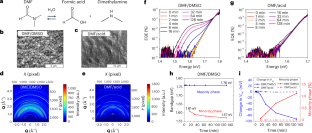研究者らは、新材料やナノデバイスの構築を視野に入れ、深層強化学習を用いて原子を格子状に誘導した。 Researchers used deep reinforcement learning to steer atoms into a lattice shape, with a view to building new materials or nanodevices.
2022-12-07 フィンランド・アールト大学
このアプローチをナノサイエンス材料の世界に適用することは、新しい試みである。ナノテクは、機械学習を導入することで、より強力になる。なぜなら、通常は人間が行うパラメータ選択と試行錯誤を加速させることができるからである。
<関連情報>
- https://www.aalto.fi/en/news/the-smallest-robotic-arm-you-can-imagine-is-controlled-by-artificial-intelligence
- https://www.nature.com/articles/s41467-022-35149-w
深層強化学習による精密な原子操作 Precise atom manipulation through deep reinforcement learning
I-Ju Chen,Markus Aapro,Abraham Kipnis,Alexander Ilin,Peter Liljeroth & Adam S. Foster
Nature Communications Published:05 December 2022
DOI:https://doi.org/10.1038/s41467-022-35149-w

Abstract
Atomic-scale manipulation in scanning tunneling microscopy has enabled the creation of quantum states of matter based on artificial structures and extreme miniaturization of computational circuitry based on individual atoms. The ability to autonomously arrange atomic structures with precision will enable the scaling up of nanoscale fabrication and expand the range of artificial structures hosting exotic quantum states. However, the a priori unknown manipulation parameters, the possibility of spontaneous tip apex changes, and the difficulty of modeling tip-atom interactions make it challenging to select manipulation parameters that can achieve atomic precision throughout extended operations. Here we use deep reinforcement learning (DRL) to control the real-world atom manipulation process. Several state-of-the-art reinforcement learning (RL) techniques are used jointly to boost data efficiency. The DRL agent learns to manipulate Ag adatoms on Ag(111) surfaces with optimal precision and is integrated with path planning algorithms to complete an autonomous atomic assembly system. The results demonstrate that state-of-the-art DRL can offer effective solutions to real-world challenges in nanofabrication and powerful approaches to increasingly complex scientific experiments at the atomic scale.



